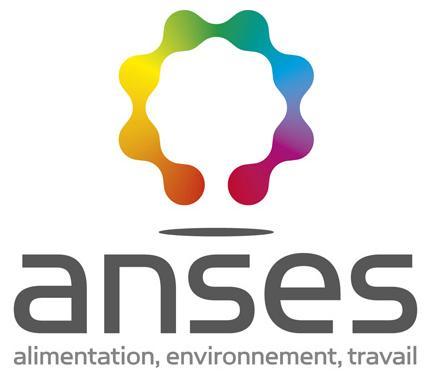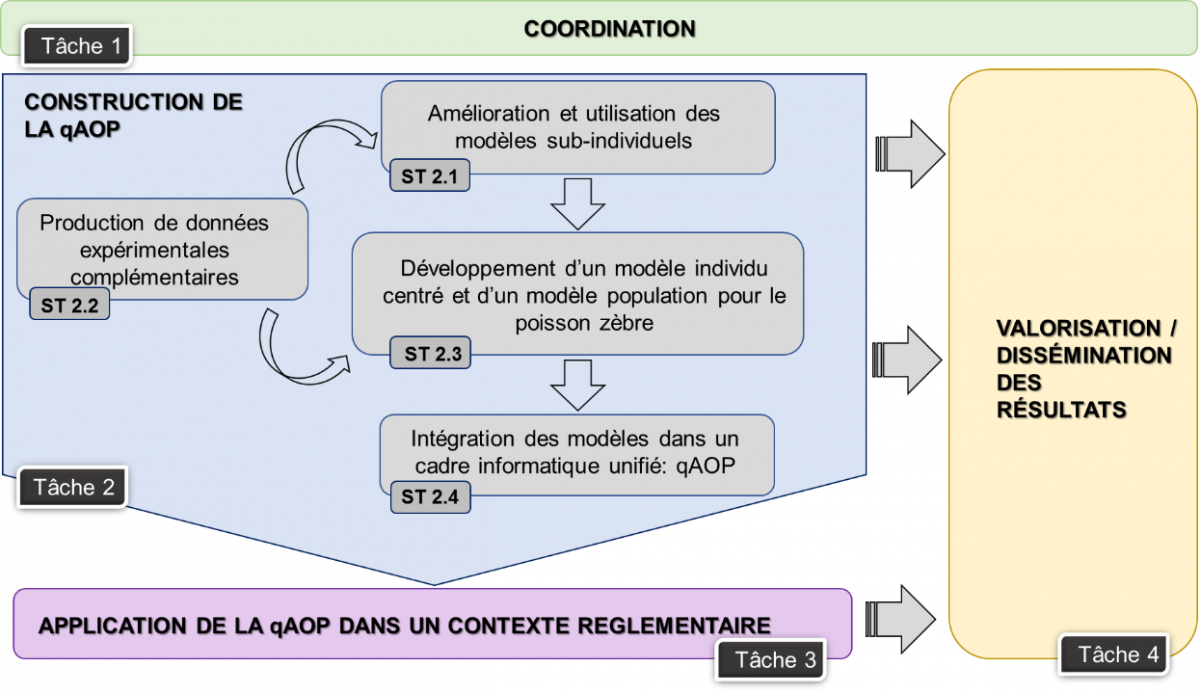
GinFiz
Gonadal aromatase inhibition and other toxicity pathways leading to Fecundity Inhibition in Zebrafish: from initiating events to population impacts (GinFiz)
-

The GinFiz project aims to develop and test new methods to characterize the unintended effects of plant protection products on fish populations, particularly the impacts resulting from disruptions to individuals' endocrine systems.
The overall goal of this project is the development and improvement of a quantitative Adverse Outcome Pathway (qAOP) leading to decreased fertility, in order to accurately predict the impacts of endocrine disruptors (EDs) across different biological levels — from internal accumulated doses to population-level effects.
To achieve this, the project will pursue three main objectives:
(i) Enhance the quantitative version of the aromatase A-based AOP, particularly to improve predictions of population-level impacts, using mechanistic mathematical models available at Ineris for zebrafish [18, 20], toxicological data generated by the AIDEZ project, and new data on steroid hormone dynamics.
(ii) Integrate into this qAOP an additional toxicity pathway likely involving the progestogen signaling pathway, which may also lead to reduced zebrafish fertility.
(iii) Use this qAOP and all generated data in a regulatory context to demonstrate its relevance for implementing the ECHA/EFSA guidance for identifying endocrine-disrupting properties.
Summary of the main results : https://www.ineris.fr/sites/default/files/contribution/Documents/2025_Note_GINFIZ.pdf
| Final report : |
|
Over the last two decades, there has been growing interest in the scientific community regarding the possible alterations in the functioning of the endocrine system of humans and wildlife as a result of chemical exposure. Many reports have shown deleterious effects of these endocrine disrupting compounds (EDCs) on the reproductive health of wildlife (invertebrates, fish, birds or reptiles), animal and human health. Development and implementation of new methods to determine the chemicals’ endocrine mode of action have been stimulated by the concern brought by EDCs effects on reproductive health, their adverse effects at biological levels being relevant to risk assessment and to demonstrate the causal link between the two. In this context, the translation of individual functional deficits into population-level effects is identified as a main challenge for EDCs hazard and risk assessment.
To this end, data collected at the different levels of biological organization could be integrated into an Adverse Outcome Pathway (AOP), and, used to develop predictive framework supported by mathematical mechanistic models (quantitative AOP). This implies establishing and modelling functional and quantitative links between a molecular initiating event and population-level effects. The gonadal cytochrome P450 aromatase disruption is one of the most thoroughly-studied mechanisms of action of endocrine disruption because of its involvement in the reproductive process. The experimental data and mechanistic models already available at INERIS for the zebrafish could support the development and/or improvement of a quantitative AOP for EDCs leading to a decrease in the fecundity, mediated by an inhibition of aromatase A or by other molecular initiating events. The main objective of the GinFiz project will therefore be the development and improvement of multi-scale models of toxicity pathways (quantitative AOP) enabling more accurate predictions of EDCs impacts on the different biological levels (from internal doses bioaccumulated to the effects on the population viability). To this end, three objectives will be targeted:
- Improve the existing aromatase A quantitative AOP, in particular, to accurately predict the impacts on populations, using the mechanistic mathematical models available at Ineris for zebrafish, as well as toxicological data already produced in the AIDEZ project, and new data on the dynamics of steroid hormones produced during the present project.
- Integrate into this qAOP another pathway of toxicity for EDCs probably impacting the progestin signaling pathway and leading also to a decrease of the fecundity.
- Use this qAOP, as well as all the existing and newly produced data, in a risk assessment context in order to demonstrate its interest in the regulatory context of the implementation of the ECHA / EFSA guide for the identification of EDC properties.
GinFiz project innovative aspect is among other things due to the production of new data, thanks to the transgenic line cyp19a1a-eGFP and to the accurate dosages of the steroid hormones circulating in zebrafish. These data will support the development of a qAOP of gonadal aromatase in zebrafish. This development will follow 4 steps: (i) application of the zebrafish PBPK model to the chemicals studied, (ii) improvement of the existing model for steroid hormone dynamics (HPG axis model), (iii) translation of the oocyte dynamic model from fathead minnow to zebrafish, (iv) prediction of the chemicals’ impact on population dynamic. These mathematical mechanistic models will integrate ecological constraints (food and temperature) and feedback loops to better take into account environmental exposure conditions compared to the existing qAOP.
Finally, integration of the qAOP developed will help strengthening the assessment of ED properties and the possible identification of the substances as EDCs, and thereby improve hazard assessment of these chemicals.


